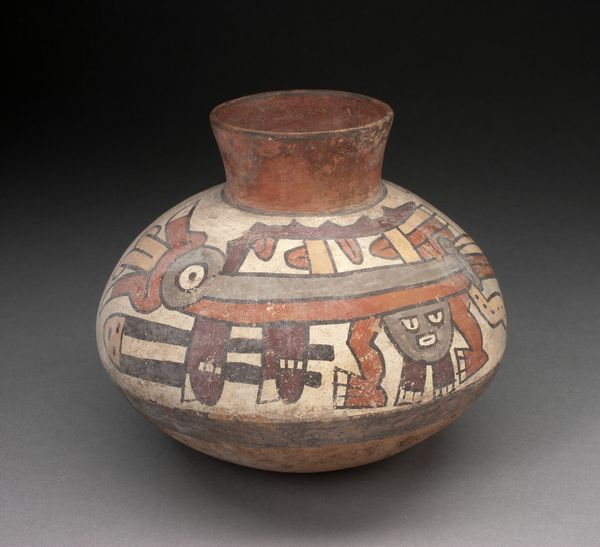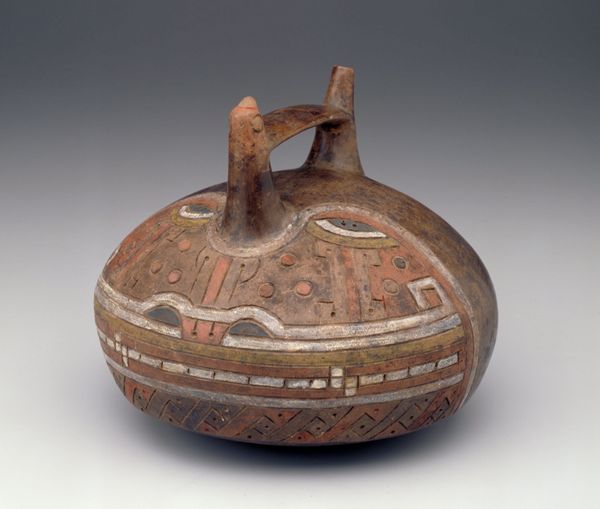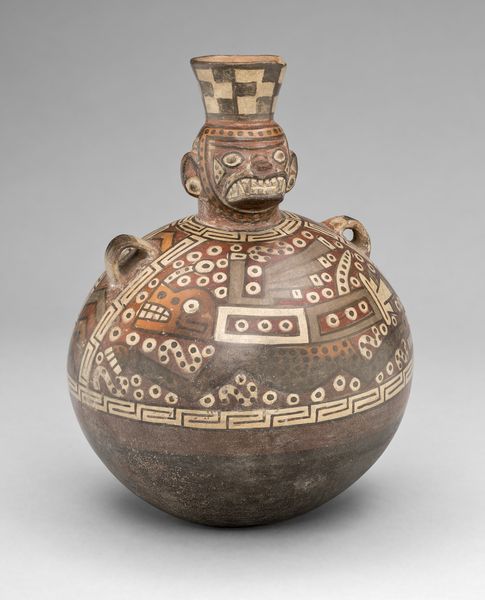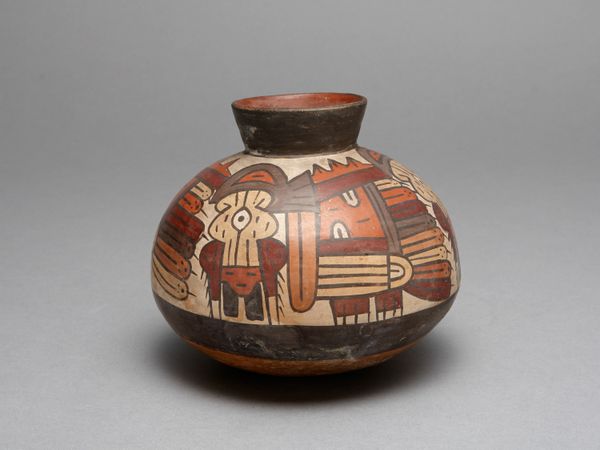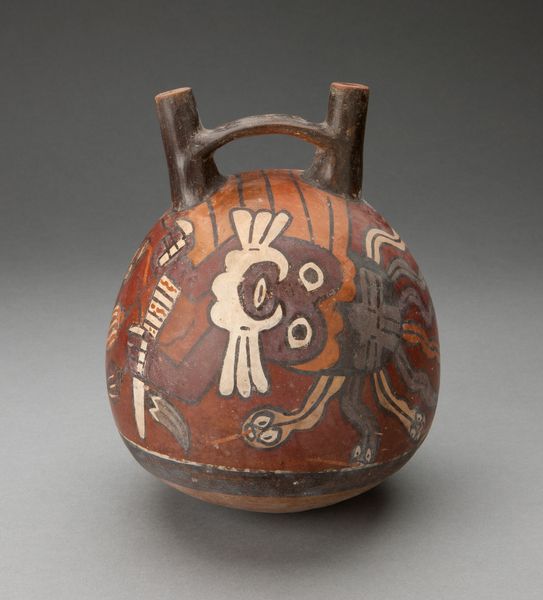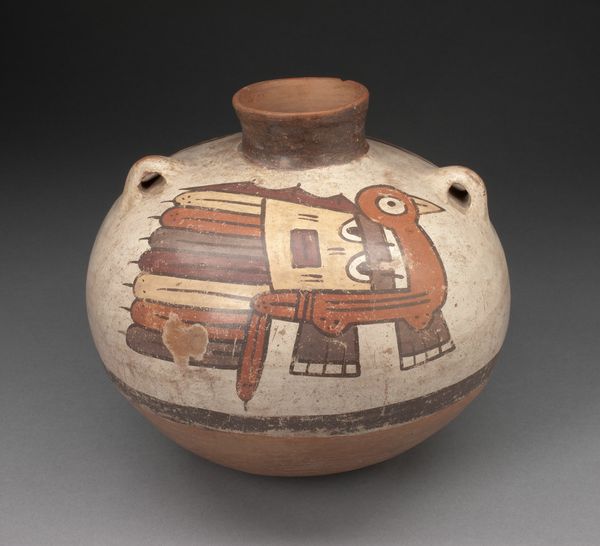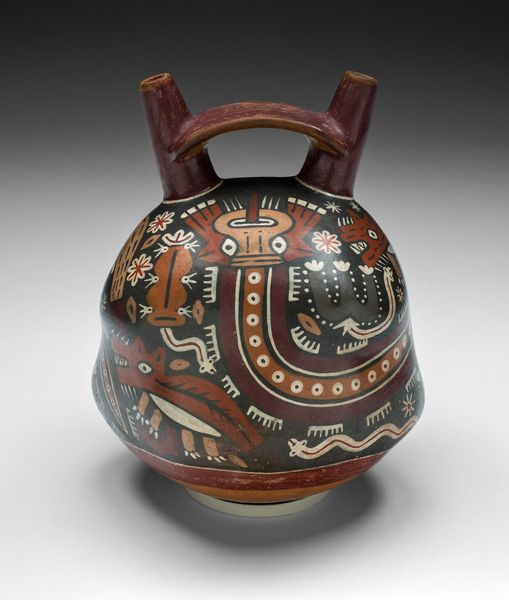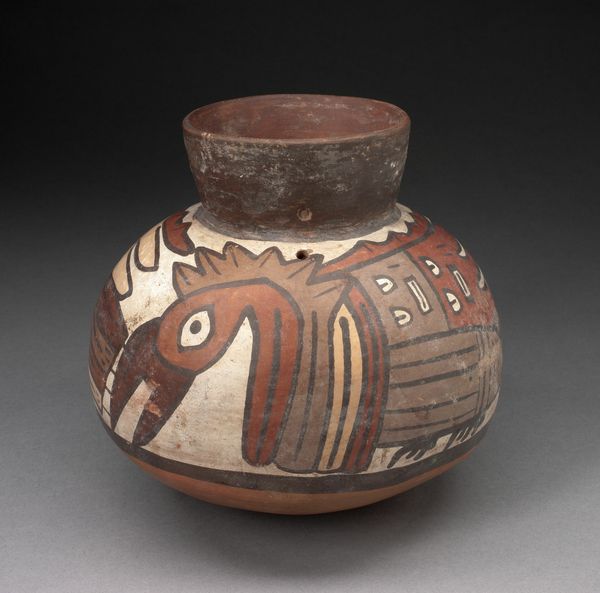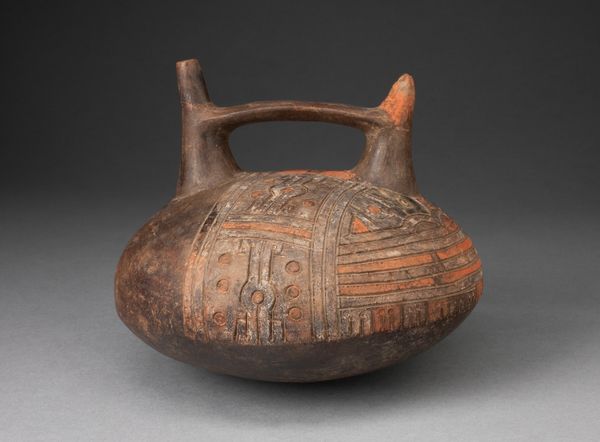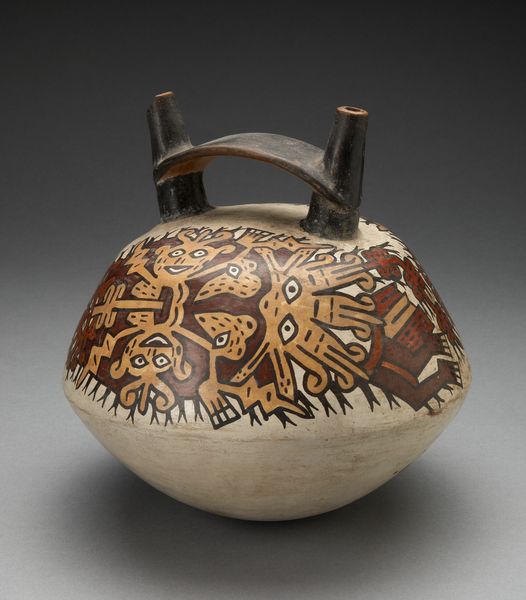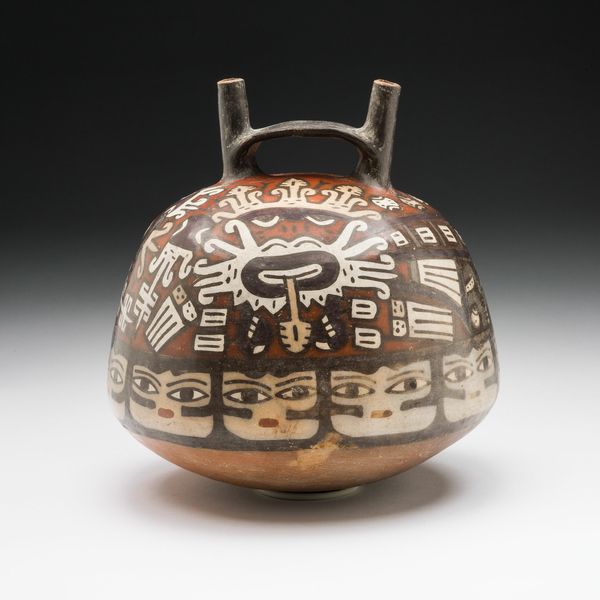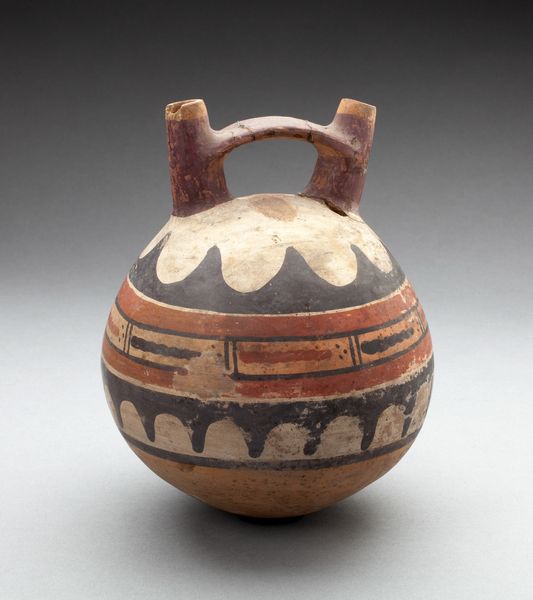
Double-Spouted Vessel Representing a Templelike Structure c. 180 - 500
0:00
0:00
ceramic
#
ceramic
#
figuration
#
indigenous-americas
Dimensions: 14.9 × 13 cm (5 7/8 in. × 5 1/8 in.)
Copyright: Public Domain
Editor: This is the “Double-Spouted Vessel Representing a Templelike Structure” made by the Nazca people, probably between 180 and 500 CE. It's made of ceramic, and currently resides at The Art Institute of Chicago. What strikes me are all the images layered together—it feels almost like an archaeological record, all compressed onto one surface. What do you make of it? Curator: It’s fascinating how this vessel, in its very form and decoration, becomes a microcosm of the Nazca world. The double-spout itself acts as a bridge, wouldn't you agree, linking the earthly and spiritual realms, much like a temple? And the imagery... Look closer. Do you see how geometric abstractions coexist with representations of human figures? Editor: Yes, I see both geometric shapes and figures of people with striking eyes. What does that combination signify? Curator: These are not just decorations; they are powerful symbols laden with meaning. The geometric shapes – stepped frets and radiating lines – are perhaps stylized representations of mountains and celestial bodies, echoing the Nazca's connection to their environment. The human figures, possibly priests or deities, would connect to the spirit world. Editor: So the vessel itself functions as a temple and displays their worldview through symbology. Is there any significance to it being a vessel for liquids? Curator: Precisely! Liquid, most likely water, was crucial to the Nazca civilization in their arid environment. This pot embodies their dependence on it, transforming a simple vessel into a potent cultural symbol, a prayer cast in clay. Every element is carefully considered and carries significant cultural memory. What is it, ultimately, that remains? Editor: It's amazing how something so utilitarian can be such a rich cultural artifact. I'll never look at pottery the same way. Curator: It’s like unlocking a time capsule. It’s a reminder of the enduring power of visual symbols and imagery to connect us to our ancestors, don't you think?
Comments
No comments
Be the first to comment and join the conversation on the ultimate creative platform.
